| Lesson Subject:
British Art Rock I |
| What you learn:
Jethro Tull (Martin Barre) Style |
| Teacher: Michael Johnson |
Michael: Welcome class, we have some very cool lesson
content to cover on the style of Jethro Tull. This lesson features the techniques used by guitarist Martin Barre
(electric/acoustic)
and Ian Anderson on acoustic guitar and flute. The musicians in Tull, led by band
leader Ian Anderson, have an incredible talent for combining acoustic and electric
guitars while layering the other instruments (flute, keys, bass,
drums), much in the manner of a classical string or horn ensemble.
This is one secret of their music... the other technique is morphing classical, rock,
folk and even some jazz. Check out the
Lesson Sample of what you'll learn!
Lesson Sample
Michael: Notice how the
lesson sample is broken into 3 sections, almost sounding like 3 different songs,
but combined into one song. Our first section starts off with a classical
sounding selection, here's the lick:
Part 1 - Lick
1
Michael:
You basically start with a F5 chord and
play a bass pattern over that section, notice how the notes bounce from F, Bb,
C, A. Here are some of the
pictures of the positions.
F5
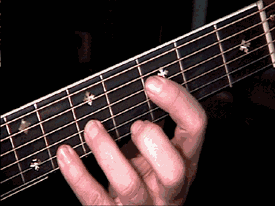
F5 w/Bb bass
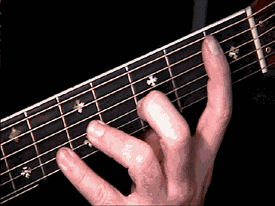
F5 w/C bass
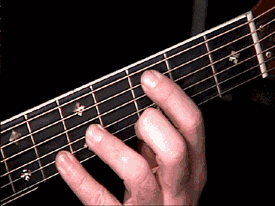
F5 w/A bass
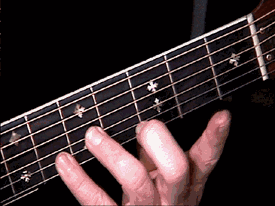
Michael:
Now the Bb over the F is quite a
stretch, bass line played over a chord usually are relative to the notes in the
chord, in this case we have: F Major (F, G A Bb, C D E), the F5 has F and Bb
(F (1), G, A, Bb, C (5), D E) and the bass line consists of F Bb. C,
A which are in the bass line and F Major scale.
Ralph: Defines the bass movement on the index
finger.
Looping Jam Track 1
Michael: Can you
reach the Bb note in the 2nd picture?
ginger: barely
Michael:
Yes, it is a little hard, but keep trying
though. If you can't reach the note you can also omit by playing the higher notes
only. I'd suggest slowing the interactive tab and looping to work on one section
at a time. First notice how the guitar, bass and flute counter and then join
together during segments of the phrase, here's our next
section:
Part 1 - Lick 2
bigb:
Are you finger
picking?
Michael: Yes
I am, you do in classical, but you can improvise with a pick as
well.
Looping Jam
Track 2
Michael:
You are all going to get a work out in this class, we have some challenging
chords and techniques, but it is good for you to experience these phrases and how
they all fit together. This stars with a F Aug 5 with a 4 in the bass, then each
chord descends based around this pattern.
oraculo: Is
Aug 5 some between 5 and 6 ??
Michael:
You have F with a #5.
Chord
1
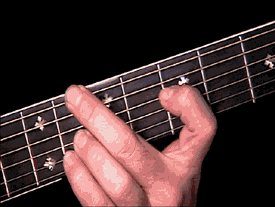
Chord 2
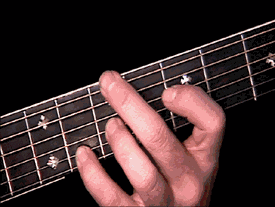
Chord 3
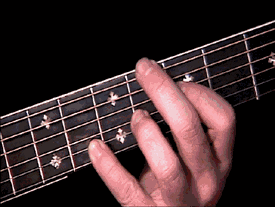
Chord 4
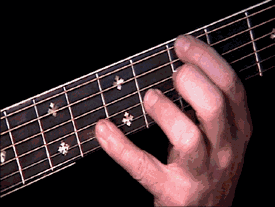
Michael:
There you go, that should help on
figuring out the chords. Now in our next section you can a bass line over the
C5, this works pretty much the same as the F5 with the bass line, only in C
Major now.
Part 1 - Lick
3
Looping Jam Track 3
Michael: This should be a little
easier to play.
Satch: So what type of music is this? what
category?
Michael:
It's considered art rock or progressive rock. This style combines classical, folk and
rock. The next section will be rock coming
up.
C5
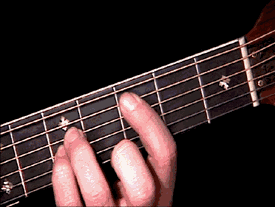
C5 w/F bass

C5 w/G bass
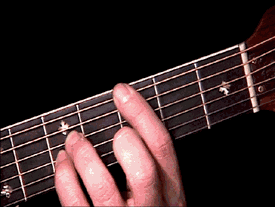
C5 w/E bass
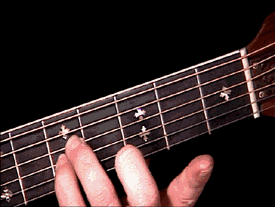
Michael:
The pictures should help, now here's the
entire 1st phrase in a jam track.
Looping Jam Track 4 (Part 1)
Michael: Tull will jump from style to style
and will often utilize the instruments to create the best effect. In this case
you'll notice how electric guitar, bass, drums and organ are used to give the
rock sound. So we have classical/folk then to rock.
Ralph:
In the
old days we called this progressive
rock.
Michael:
Yes, Art Rock and Progressive Rock are
very close, the band Kansas was influenced by Tull, you might notice the groove
laid down in this tab.
Ralph: Very sequential, yet
melodic.
Michael:
A common technique is to raise or
lower a phrase a 1/2 or whole step, giving the song more excitement and making
it more interesting.
Part 2 - Lick 1 -
2
oraculo: Is
transpose it a half tone up.
Michael:
Yes oracula, notice in part 1 you play a
sequence in the C minor scale and then modulate up to the C# min using the same
sequence. Here's a jam track.
Looping Jam Track 5
Michael: Now you can
repeat the end of the theme you played in part 1 (C5), only this time using
electric combo sound.
Part 2 - Lick
3
Michael:
Here's a jam track for the 3rd lick of Part 2:
Looping Jam
Track 6
Ralph: This line reminds me
of a RUSH thing!
Michael:
You bet Ralph! Rush was influenced by Tull as
well. OK, now we can jump back into the classical section using a different
pattern, this is a descending pattern in
Am.
Part 3 - Lick 1
Michael:
Notice the classical/swing (jazz) type feel, another example of "morphing"
styles together. This is quite common with Art Rock/Progressive
bands.
Ralph: I
heard a little Steve Howe at the end
there.
Michael:
You bet, here's the last jam
track.
Looping Jam
Track 8
Michael:
Here's parts 1, 2 & 3 together.
Looping Jam Track (All Parts)
Michael:
I hope this lesson gave you all a better understanding of how Jethro Tull
creates their sound.
Ralph: Great composition as well.
Michael:
Hey thanks, I had fun creating it. There
were many progressive bands influenced by Tull in the later 70s and early
80s.
oraculo: Thanks a lot teacher, was very
interesting!
Michael:
See you next lesson
everybody!!!
Ralph: Thanks for your time
|
<< load notation from left
|